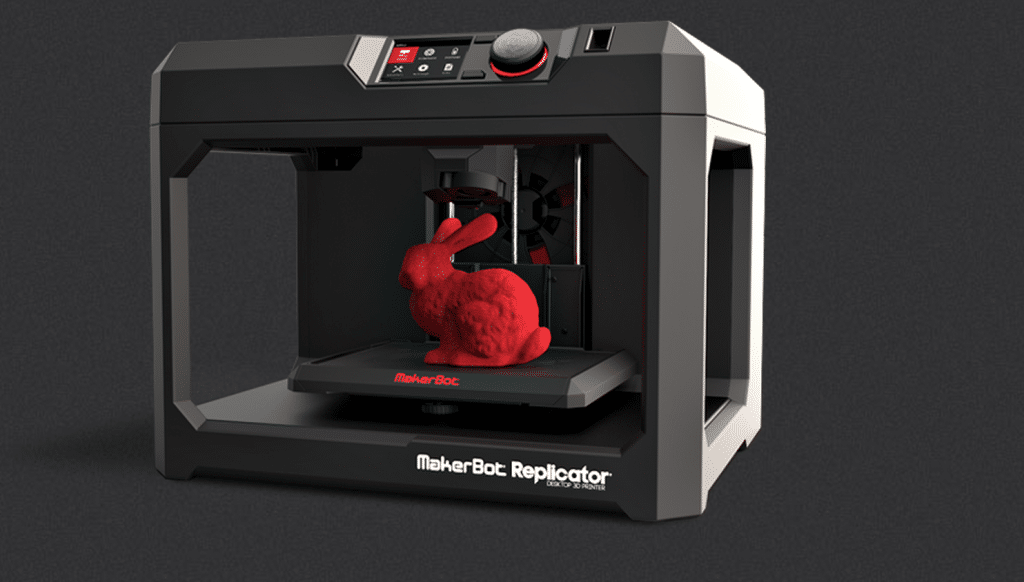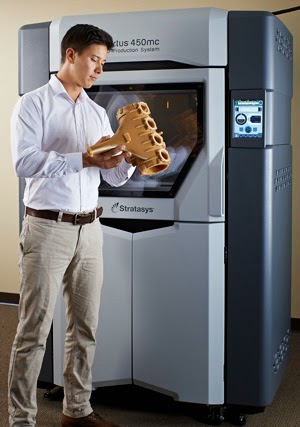What sets a Professional 3D Printer Apart From a Hobby 3D Printer?
 A hobbyist 3D printer, such as a MakerBot, is great for home users, students just learning about 3D printing, and sometimes users who are just looking to dip a toe into the waters. These machines’ price points can range from $1,375 for the Replicator Mini to $6,499 for the Replicator Z18 and use Fused Deposition Modeling (FDM) to layer plastic repeatedly to create a part. Hobbyist printers are limited in features such as build size, material options, resolution or precision, and heat controls. However, the needs of students and 3D printing enthusiasts may not be as particular as those of manufacturing professionals. What makes a MakerBot type of 3D printer great for students and home users is a more accessible starting price point that will still provide the user with a quality printed part and a fairly intuitive interface.
A hobbyist 3D printer, such as a MakerBot, is great for home users, students just learning about 3D printing, and sometimes users who are just looking to dip a toe into the waters. These machines’ price points can range from $1,375 for the Replicator Mini to $6,499 for the Replicator Z18 and use Fused Deposition Modeling (FDM) to layer plastic repeatedly to create a part. Hobbyist printers are limited in features such as build size, material options, resolution or precision, and heat controls. However, the needs of students and 3D printing enthusiasts may not be as particular as those of manufacturing professionals. What makes a MakerBot type of 3D printer great for students and home users is a more accessible starting price point that will still provide the user with a quality printed part and a fairly intuitive interface.Professional 3D printers, on the other hand, bring a far wider range of features that manufacturers and designers not only want but need in order to create accurate prototypes or parts that will be brought to market. There are many different 3D printing technologies available, but the main features that set professional printers apart from their smaller counterparts include things like accuracy, repeatability, soluble supports, material options, warp reduction, and safety.For example, a Stratasys Fortus250mc printer uses the same basic FDM technologies as the Makerbot, but comes at a far higher price range. However, Fortus users get features including (but not limited to) a heated build chamber to reduce warping, a wide range of common industry compatible materials, higher resolution capabilities, and a build tray that is well over double the size of a MakerBot’s. For a company like John Deere, printing a large tractor part that their design team is working on and quickly validating its shape, size, and functionality is crucial to making sure projects stay on time and budget. This kind of work simply can’t be done on a hobbyist printer.
Are you trying to decide between a personal and professional 3D printer? Ask yourself what your particular needs are and what kind of return you’re looking to get out of your 3D printer. Both hobbyist and professional printers are valuable tools, but they do have very different capabilities.If you could use a hand deciding which 3D printer is your best fit, our team is always available. Contact us by clicking here and one of our team members will help you out.

 Blog
Blog 